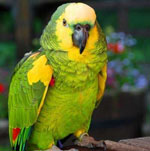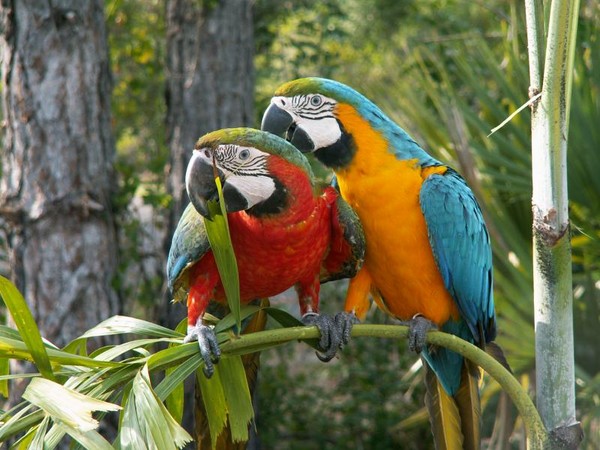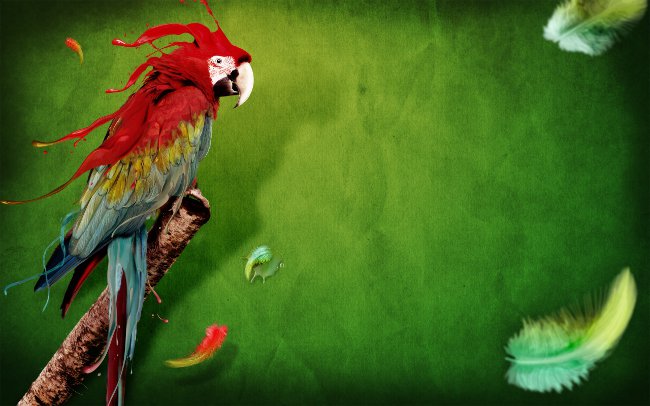And a little more about the diseases of parrots

Often found in parrots respiratory diseases. They are caused by drafts, colds,cold water, sudden temperature changes and infection from other birds. After catching a cold, a parrot, like a person, begins to sneeze, cough, and even has a runny nose! Acute and chronic bronchitis and pneumonia are the results of an untreated cold. These diseases are characterized by inflammations in the bronchi, the sick bird begins to breathe heavily, wet rales appear and mucus fluid is released.
In order not to run a cold, you can try to treat your parrot yourself with the help of warming up. If the bird you have is not alone, then in order not toinfect the rest, the "patient" must be deposited in a separate cage. Next to her usually put an infrared lamp (if there is no infrared, then use a conventional, desk lamp). This is necessary for the temperature in the cell to rise to 30-35 degrees. Stay in a special cage under parakeet heating you need about 5 days.
For the treatment of bronchitis and bronchopneumonia use vitamin C 0.001-0.002 once a day for two weeks with honey, jam or other delicious food. In particularly difficult cases, veterinarians appointantibiotics and sulfonamide preparations. Occur in all species of parrots and eye diseases. They arise because of negligent pets, the presence of harmful gases in the air (ammonia, hydrogen sulphide, tobacco smoke, etc.), the lack of feed in the diet rich in vitamins, and, first of all, vitamin A.
When the bird falls ill, her eyes fester, tears flow from them, and her eyelids stick together. With eye diseases you can fight the followingway: rinse the eyes with a solution of boric acid (in 100 ml of pure boiled water add 3 g of boric acid and mix thoroughly) twice a day until complete recovery. Well after washing the eyes with this solution add 1 drop of 0.5% alcohol solution of vitamin A (in 100 ml of boiled water add 0.5 ml of alcohol solution of vitamin A).
Try also to keep the parrot clean,give a varied and nutritious food, especially sprouted wheat and fresh herbs. If the cage for parrots is small in size, the perches are incorrectly located in it, the sharp rods are not bent, then the birds can get injured - from simple bruises to fractures. Most often, birds get bruises from different areas of the head, since they can strike against the mesh, the window glass.
With bruises without skin damage,inflammation, which passes itself after a while. Fractures are much more serious. They can be complete when the bones diverge at the site of the fracture, and incomplete - with cracks in the bones. When the fracture is closed, the limb hangs in an unnatural position, and a swelling appears in the fracture region. With a full open fracture, soft tissues are damaged and the wound bleeds severely. The place of incomplete fracture swells and hurts, so the bird can make sounds, which can not be ignored.
Of course, it's best to take the pet toveterinarian, but if there is no such possibility, then we will have to act ourselves. When bleeding, you need to carefully inspect the wound, clean it of dirt and stop the blood with a cotton swab dipped in hydrogen peroxide.</ strong> After this, it is important to put a broken limbin a normal position and apply for 10-15 days a tire of two thin sticks with a plaster bandage. When the wing is broken with scissors, all feathers are cut off from it, the bones of the wing are combined as they should be, and the wing is fixed with the help of cardboard and threads. "Injured" in the diet necessarily include cottage cheese, calcium and phosphorus, so that the bone fused better.














